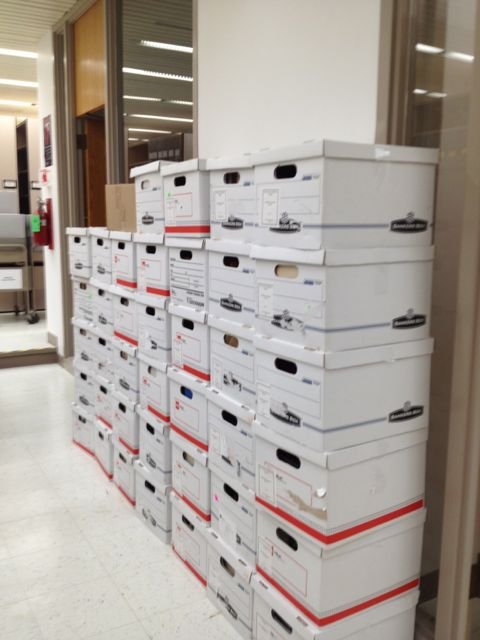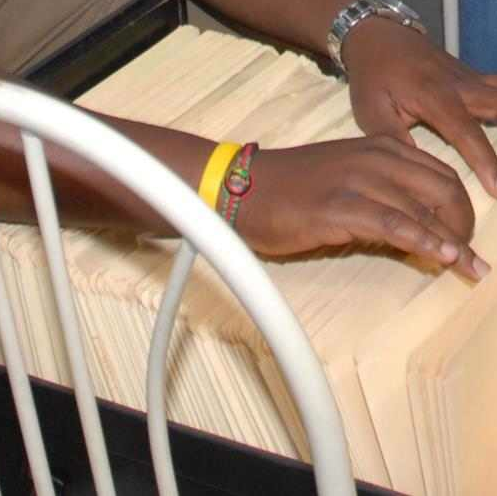Storage and Housing
One of the most important things to consider when holding archival material is the storage environment. Doing so will ensure that your collections are preserved and accessible for as long as possible.

- It is best to house materials in cool, dry places where the temperature and humidity will remain stable despite outside weather such as rain, wind, snow, and sun.
- Limiting both natural and artificial light will prevent the deterioration of your materials.
- You should consider other risks to preservation in your storage area such as mold, pests, water damage, fires, and theft.
- It is important to assess the risks to your materials and create an emergency plan to save particularly valuable materials in the case of an emergency. For example, you might want to mark boxes to rescue if an emergency flood is likely to occur or you may store your boxes on raised shelves as a preventative measure.
- Some collectors choose to house their materials in off-site storage lockers if there is too much material to safely house on-site. However, there can be risks that come with turnover should there be any issues with payment or if the owner of the storage locker passes away. To make sure materials are not lost, make sure there is a plan in place to save the collection in case there are any changes in ownership or issues with the storage locker rental.
- When possible, it is best to store photographs and fragile documents using proper housing materials such as chemically stable plastic sleeves, and acid-free folders and boxes with proper labeling. You may also need oversized folders and sleeves for large items such as posters or maps which should be stored unfolded and flattened. Folders should fit in their boxes snugly, with neither too many nor too few folders so they do not begin to tear or curl. Consider using acid-free spacers or half-size boxes if folders are too loose, or putting some folders in another half-size box if they are too tightly packed. Archival supplies can be purchased from companies like Gaylord Archival or Hollinger Metal Edge. However, they are not always the most affordable, so you can also use clean cardboard boxes with lids and standard file folders as a temporary solution until proper archival supplies can be purchased. See more information about which housing materials you can purchase on our Starting Your Archives: Supply List spreadsheet.
- If you want to digitize your materials and preserve those files, it is important to consider whether you have the proper equipment for both digitization and file storage. For example, if you want to digitize photos and documents you should purchase a high-quality scanner that will not damage your materials and will provide a higher resolution quality. For other data and digital materials such as websites, social media accounts, scientific data, and audio-visual recordings, you should research which storage and software is appropriate for your specific collection. If you have an abundance of digital files, you may need additional hard drives, cloud storage, or other storage software to house large amounts of them. See more information about personal digital archiving and small-scale digitization by watching Part Two of our Introduction to Archiving Series or looking at our Personal Digital Archiving & Digitization Resources Document.
Once you have the proper housing for your archival materials, you can begin to process, or organize and catalog, them.
This resource was first created by Jehoiada Calvin (f.k.a. T Calvin), BMRC Community Engagement Archivist, in 2020, and edited by him in 2022.
